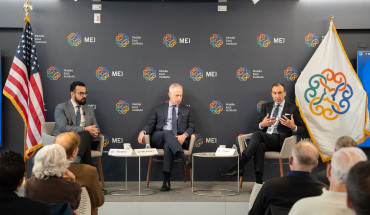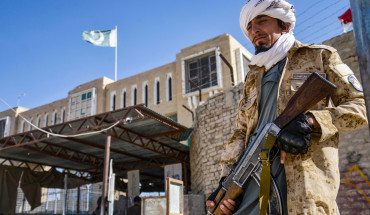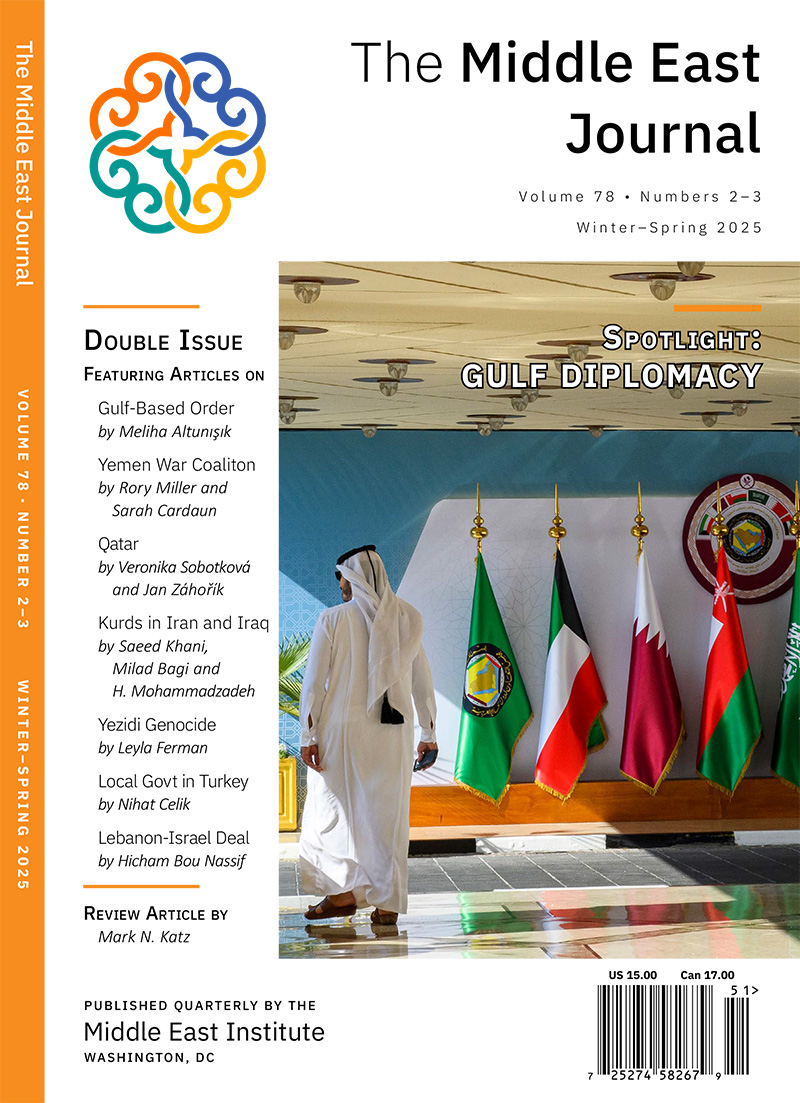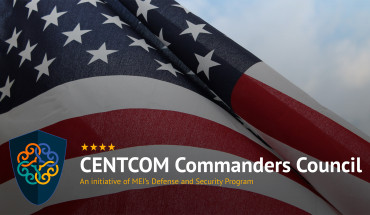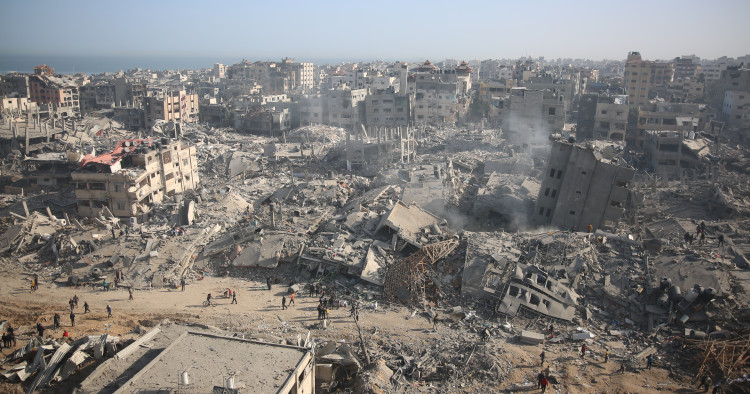President Donald Trump is basking in the glory of having contributed to the current cease-fire between Israel and Hamas, which went into effect on Jan. 19, a day before his inauguration. Despite a few hiccups, the cease-fire has achieved its initial milestones: Hamas has freed 13 Israeli and five Thai hostages, while Israel has released more than 600 Palestinian prisoners, allowed more than 4,200 trucks carrying humanitarian assistance into Gaza, and is now permitting the return of Palestinians to northern Gaza.
The jubilation on the streets of Tel Aviv and Ramallah suggests that there is considerable support for continued calm among Israelis and Palestinians. Yet much depends on upcoming negotiations regarding the next phases of the cease-fire agreement. To implement Phase 2, the principal mediators — Egypt, Qatar, and the United States — must convince the Israel Defense Forces to effect a complete withdrawal from Gaza in exchange for the return of captured Israeli male soldiers. As a key component of Phase 3, Palestinians expect political and economic commitments in support of Gaza’s post-conflict reconstruction. Not surprisingly, Palestinians and other Arab countries have rejected Trump’s Feb. 4 proposal to remove Palestinians from Gaza and rebuild the area as an international tourist mecca.
Reconstruction options, obstacles abound
Assuming discussions proceed with respect to the details of Phase 3, negotiators can draw from the plethora of plans prepared and promoted by governments, non-governmental organizations, think tanks, and concerned citizens during the last 12 months. Cumulatively, these plans have contributed to planning exercises within the US and other governments. However, the fundamental questions of who will govern Gaza, who will provide security, and who will deliver the funding to rebuild Gaza have yet to be definitively resolved.
Many of the plans recognize that the circumstances in Gaza are unique and approaches applied elsewhere must be adapted to current realities. To achieve long-term success, creative and visionary thinking is required regarding security, governance, mechanisms for delivering humanitarian assistance, prioritizing among sectors and projects in reconstructing a now devastated landscape, and identifying sources of funding for such a massive undertaking.
The plans assume the necessity of an external security force. However, they differ regarding the sponsoring organization (the United Nations vs. an ad hoc coalition of countries), legal basis for its mandate, number of security forces required on the ground, anticipated length of deployment, and sources of financing. The general consensus among the plans is that the backbone of such a force would come from Arab countries. The question of a US military role in such a force is a point of divergence among various plans, with some suggesting the critical importance of even a symbolic presence while others assume that such deployment is politically improbable and operationally unwise. Finally, some plans envision the use of private security contractors to protect international personnel, to accompany humanitarian assistance convoys, and, in the most bold version, to exercise policing authorities; as part of the cease-fire agreement, a private security contractor is now operating a key checkpoint in Gaza to inspect Palestinian vehicles that move from southern Gaza to northern Gaza.
Formal governance within Gaza does not exist. Despite having been weakened by the constant Israeli assaults and the deaths of many top leaders, Hamas still exercises a modicum of control, as evident from the orchestrated ceremonies preceding the transfer of hostages to the International Committee of the Red Cross and the renewed presence of Hamas police on the streets of Gaza. Yet none of the prospective international partners envision a public role for Hamas as part of the reconstruction process.
The Palestinian Authority (PA), while theoretically “waiting in the wings,” is not physically present in Gaza in a politically meaningful way. According to a public opinion poll released in September, many Palestinians in both Gaza and the West Bank are extremely critical of the PA’s performance throughout the crisis, even after the installation of a new PA prime minister in March 2024. Meanwhile, the international community consensus is that PA “reform” is essential, but freezing the PA out of the Gaza reconstruction effort would add to its marginalization and bury the last vestiges of the Oslo process.
Statehood remains the key issue
In their Feb. 1 letter to US Secretary of State Marco Rubio, the foreign ministers of Egypt, Jordan, Saudi Arabia, Qatar, and the United Arab Emirates as well as the secretary-general of the Palestine Liberation Organization express their willingness to work with the United States “on implementing a plan to realize the two-state solution” and caution against steps that would undermine this outcome. The letter also references “an ongoing regional mobilization with the international community to start the reconstruction of Gaza, which will culminate in an international conference to be hosted by Egypt in partnership with the United Nations.” However, the letter does not provide details with respect to an interim administration to govern, a commitment of security forces to keep order, the ongoing presence of potential spoilers like Hamas and other organizations categorized as terrorists, and the personnel and funding levels they, individually or collectively, would be willing to provide.
To date, Israel’s government and parliament have overwhelmingly rejected one of the key premises of the foreign ministers’ letter, namely committing to a two-state solution. And Netanyahu’s government coalition may yet dissolve over issues relating to a complete withdrawal from Gaza and allowing Phase 3 reconstruction activities to begin.
Critical infrastructure must be restored
Meanwhile, the immediate and long-term challenges facing Gaza’s 2 million people are enormous. As has been well-documented, much of the physical infrastructure has been destroyed, including roads, power plants, water distribution and wastewater facilities, schools and universities, and hospitals and health clinics. The removal of more than 50 million tons of accumulated rubble and unexploded ordnance will require considerable time and enormous expense. While societal resilience has proven extraordinary, the population currently suffers from lack of shelter, minimal levels of primary health care, and severe mental trauma.
Meeting the immediate humanitarian needs of the population will remain a priority for the foreseeable future. Building back essential services — such as schools, primary health clinics, hospitals, roads, and energy and water facilities — will be critical to restoring a sense of normalcy for the population. External support also will be required to revive the badly battered Palestinian private sector.
The revival of specific institutions is critical to development. Of particular importance is a mechanism for resolving property disputes and insurance claims. While a bottom-up rebuilding of the judicial system may take too much time, the establishment of ad hoc tribunals to mediate disputes would avert the settling of disagreements through violence and provide much-needed confidence to the banking sector and prospective investors.
Traditionally, the United Nations Relief and Works Agency (UNRWA) has played a critical role in providing public services to Gaza’s population. Israel is determined to reduce if not eliminate UNRWA’s capacity and has received support for this goal from the Trump administration. Given the immediacy of the needs, the failure to use UNRWA’s infrastructure would add to the suffering. Ideally, an agreement would be reached whereby UNRWA continues to operate, albeit subject to increased oversight regarding the use of its facilities and recruitment of personnel. And if not, a Plan B would be urgently needed to avoid a consequential vacuum that would further exacerbate an already severe humanitarian crisis and further embitter the population.
Solutions must include West Bank, economic integration, political institutions
While not nearly as acutely, the West Bank too suffers from infrastructure deficiencies, governance weaknesses, security threats, and a declining quality of life. In addition to reunifying the two areas politically, reconstruction packages, to the extent possible, should be developed holistically and consistent with a vision of strengthening political and economic connections between the two regions and creating conditions necessary for the establishment of a Palestinian state.
Various Palestinian stakeholders may have different views regarding priority investments. Yet ensuring meaningful Palestinian participation in the process is complicated by the dispersal of local communities throughout the territory, the lack of elections since 2006, and the impossibility of holding elections in the immediate future. Committing to an electoral timeline of 18 to 36 months may reassure Palestinians that interim leaders will not serve in perpetuity.
Even as immediate needs are addressed, a long-term vision for Gaza’s economic and social prosperity is essential. President Trump’s 2020 Peace to Prosperity plan, while rejected at the time by the Palestinians, presents innovative ideas for growing the Palestinian economy. One plan developed during the past year imagines an improved quality of life for Palestinians through a series of mega-infrastructure projects. Think tank efforts in this vein continue; just last week, Rand published a 213-page report on Pathways to a Durable Israeli-Palestinian Peace.
The task is large, the needs immediate
The transition from notional concept to detailed design to physical construction to activation will take many years, but enormous psychological benefits will accrue from initiating such efforts even as day-to-day exigencies require immediate attention. In a similar vein, rebuilding Gaza one area at a time will provide an important demonstration effect of what the enclave will look like down the road and would stimulate the local economy.
Financing the immediate needs and the longer-term infrastructure investment will require significant and sustained commitments over many years, including from the US. For example, donors have provided an estimated $10 billion to Kosovo since 1999, with the US contributing $1.2 billion. Comparisons to other post-conflict reconstruction exercises have their limits; while they delineate the types of activities that must be undertaken and offer realistic approximations of the time required to accomplish various tasks, projecting a precise number for Gaza is fraught given currently available data and uncertainties concerning the rebuilding model.
In September 2024, the United Nations Development Programme (UNDP) presented an integrated emergency response and early recovery program plan with an initial budget of $250 million over two years. More expansive reconstruction estimates fall in the $50-80 billion range, including $1.2 billion for rubble removal.
The United States, European Union and member countries, and several Gulf states have provided more than $44 billion in official development assistance in the Palestinian Territories between the signing of the Oslo Accords in 1993 and 2023. Given that much of the donors’ previous investments in Gaza are now in ruin, they will want assurances from Israel that proposed projects can proceed. Israel will undoubtedly insist on the use of advanced technologies to inspect and track dual-use items entering Gaza, which will further complicate and add to the cost of reconstruction efforts.
US guarantees will be essential
Where does the US figure in the Gaza reconstruction efforts? President Trump has consistently opposed deployment of US military forces overseas and any post-conflict assistance for the Palestinians would seemingly have to meet the Administration’s three-fold test: “Does it make America safer? Does it make America stronger? Does it make America more prosperous?” However, Trump’s comments on Feb. 4 suggest perhaps a willingness to contribute US funds to rebuilding Gaza, even if his proposed scheme has little chance of moving forward.
Juxtaposed with Trump’s skepticism regarding the efficacy of foreign assistance, particularly in places like Palestine, is his desire to advance Israeli-Saudi normalization and to receive encomiums as the president who resolved Israel’s conflicts with its neighbors. Nonetheless, the Saudis and other Arab countries have made clear that they will not contribute to a rebuilding effort absent an Israeli commitment to recognize a Palestinian state. Ultimately, the amounts placed on the table by the United States, as a percentage of the contributions of European and regional actors, are less important than a commitment to remain integrally involved in the reconstruction efforts as guarantor of the process.
Many who have toiled through the ups and downs of the Israeli-Palestinian conflict appreciate the seemingly risky financial investments that are now more than ever essential. Yet, they also know the consequences in human lives and social despair of continued failures. To paraphrase a 2nd century Talmudic sage, we may not complete the task of rebuilding Gaza and achieving a sustainable peace in our lifetime, but we are not at liberty to give up hope of achieving such a noble objective.
Larry Garber, a former senior USAID policy official during the Clinton and Obama administrations. He served as the USAID mission director to the West Bank and Gaza and as an election observer to Palestinian presidential, legislative, and municipal elections.
Photo by Omar El Qattaa/Anadolu via Getty Images
The Middle East Institute (MEI) is an independent, non-partisan, non-for-profit, educational organization. It does not engage in advocacy and its scholars’ opinions are their own. MEI welcomes financial donations, but retains sole editorial control over its work and its publications reflect only the authors’ views. For a listing of MEI donors, please click here.






